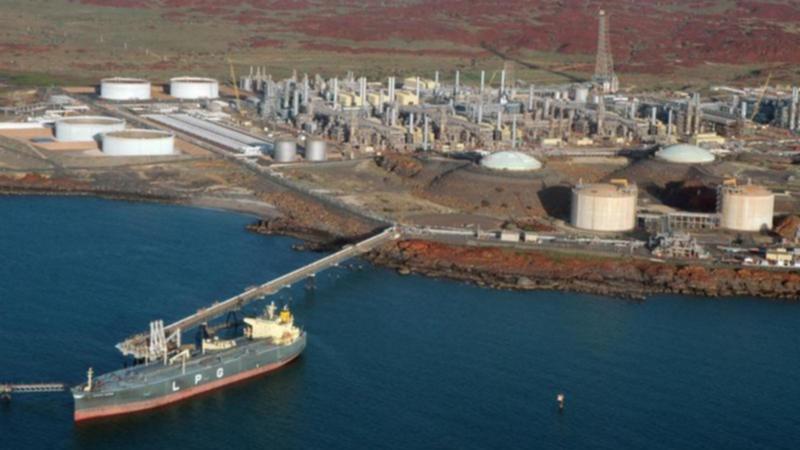
by Ted Woodley, courtesy of Financial Review
Transgrid recently issued an update on Project EnergyConnect, the 900-kilometre electricity transmission connection between South Australia, Victoria and NSW, revealing a cost blowout to $4.1 billion – almost twice the limit approved by the Australian Energy Regulator.
EnergyConnect, which according to Transgrid is Australia’s largest energy transmission project, consists of two sections. The South Australian section runs 200 kilometres from Robertstown to the NSW border and was completed in 2023 by ElectraNet. The NSW section runs 700 kilometres from the SA border to Wagga Wagga, including a short spur to Red Cliffs in Victoria, and is being constructed by Transgrid with the completion delayed to late 2027.

The update revealed that Transgrid has negotiated a new fixed-price contract with its Spanish contractor, Elecnor Australia, for the NSW section and revised the cost to $3.6 billion.
This comes more than four years after construction started, and is a whopping 100 per cent jump from the $1.82 billion approved by the AER for the NSW section (to avoid confusion the various historical costs have not been adjusted to real values).
It would seem that Transgrid is assuming that the extra $1.78 billion will be rubber-stamped by the AER in due course, thereby doubling the increase in NSW transmission tariffs.
‘Unforeseeable factors’Astoundingly, the update asserted the new contract and revised cost are “to ensure this critical project is delivered in the most prudent and efficient manner for energy consumers … and maximise long-term benefits to consumers”.
There was no apology, just a citing of “unforeseeable factors” such as COVID-19, labour shortages, inflation, the war in Ukraine, flooding etc.
There may be substance in some of these over-used excuses, but such factors should usually be covered by the contingency set aside in every project budget.
Transgrid’s cost blowout and construction delays on the NSW section have blindsided the AER, despite its “thorough assessments”. By contrast, ElectraNet has completed the SA section on time and seemingly within its AER-approved budget ($457 million), even though it too was subjected to the same unforeseeable factors.
So the total cost of EnergyConnect will now be at least $4.1 billion, for just 800 megawatts of transmission capacity. If this order of expenditure had been estimated at the outset the approved project design would not have progressed beyond the feasibility stage.
A quick recap of the project.
In 2016, the SA government announced a feasibility study for a $300 million to $700 million interconnector to export the state’s excess renewable energy to NSW. Transgrid was quick to add support.
In 2020, after a seven-month assessment process of a joint ElectraNet/TransGrid proposal, the AER determined that EnergyConnect satisfied the regulatory investment test at a cost of $1.53 billion, with completion due in 2022-2024.
Transgrid commended “the rigorous assessment of the forecast to ensure consumers pay no more than is needed”.
Later that year further submissions were put to the AER for an increase to $2.36 billion, with Transgrid warranting “a thorough assessment to ensure the increased cost was prudent and efficient” (the same assurance as for the latest blowout).
In 2021, after an eight-month assessment process, the AER “upped its approval” to $2.28 billion ($1.82 billion for Transgrid and $457 million for ElectraNet).
The AER congratulated itself for cutting $88 million off the submitted amount, “which will reduce the bill impact for consumers … by 4 per cent … helping to ensure consumers pay no more than is needed”.
However, the AER also cautioned that “the net benefits remain finely balanced and there is a significant zone of uncertainty associated with the benefits”. At the time many energy experts contended that the project’s cost exceeded its benefits.
Assessments shattered
Transgrid’s latest blowout has shattered the AER’s thorough assessments and $88 million Clayton’s saving for consumers and also dispelled any uncertainty about whether EnergyConnect has a net benefit – a $4.1 billion cost swamps its claimed benefits (some of which were questionable in the first place).
No doubt the majority of Transgrid’s $3.6 billion has already been committed, making a mockery of the regulatory approval process and assertions of prudency and efficiency and looking after the interests of consumers.
Going on past performance the AER is unlikely to insist that Transgrid contribute anything to the cost blowout, though it will have to come up with some nifty explanations.
And we shouldn’t presume this is the final cost.
As we have seen with every large energy project (for example, HumeLink, VNI West, Marinus Link, Snowy 2.0), costs continue to escalate substantially as construction proceeds.
Also, there is no comfort in the new contract being “fixed-price”, as Elecnor can simply threaten to walk away if not recompensed for its expenditure and profit margin.
Last year it was reported that Elecnor was walking away from the troubled project, having defaulted on its contractual obligations and with a new contractor engaged. It now seems Elecnor has been persuaded to stay, with a generous financial boost.
This latest cost blowout has followed the well-established process being applied by the proponents of practically every major energy project:
- Stage 1: gain government endorsement for a “critical” project based on exaggerated benefits and a ridiculously underestimated cost.
- Stage 2: obtain regulatory approval (after thorough assessments) and start construction.
- Stage 3: discover that costs have blown out unforeseeably and re-negotiate the construction contract at a much higher fee to keep the contractor on the job.
- Stage 4: re-emphasise the criticality of the project for the energy transition and get the regulator’s rubber stamp and or government approval to complete the project.
- Stage 5: repeat the final two stages as many times as possible.
Transmission companies have consistently pushed the line: “There is no transition to renewables without transmission.” And governments, the AER and AEMO have enthusiastically endorsed practically every proposed mega-project, without undertaking proper due diligence.
The beneficiaries of this flawed process are the transmission companies and their contractors, usually foreign-based. The more they build and spend, no matter the amount or the actual benefits, the greater their profits. All at the expense of Australian energy consumers.
When will transmission companies be held to account for woeful cost underestimates, false assurances and poor project delivery?
When will the AER start performing its role – “the AER exists to ensure consumers are better off now and in the future”?
And when will governments take action to restructure the flawed transmission approval process and start protecting the interests of consumers from the risks and excessive costs of these over-hyped projects?




